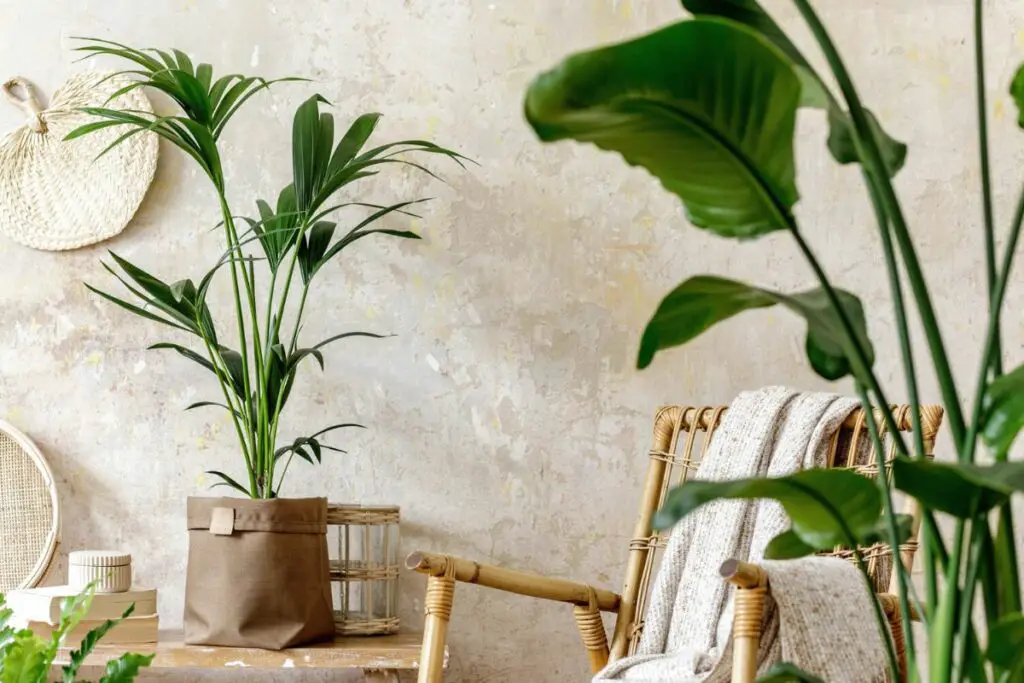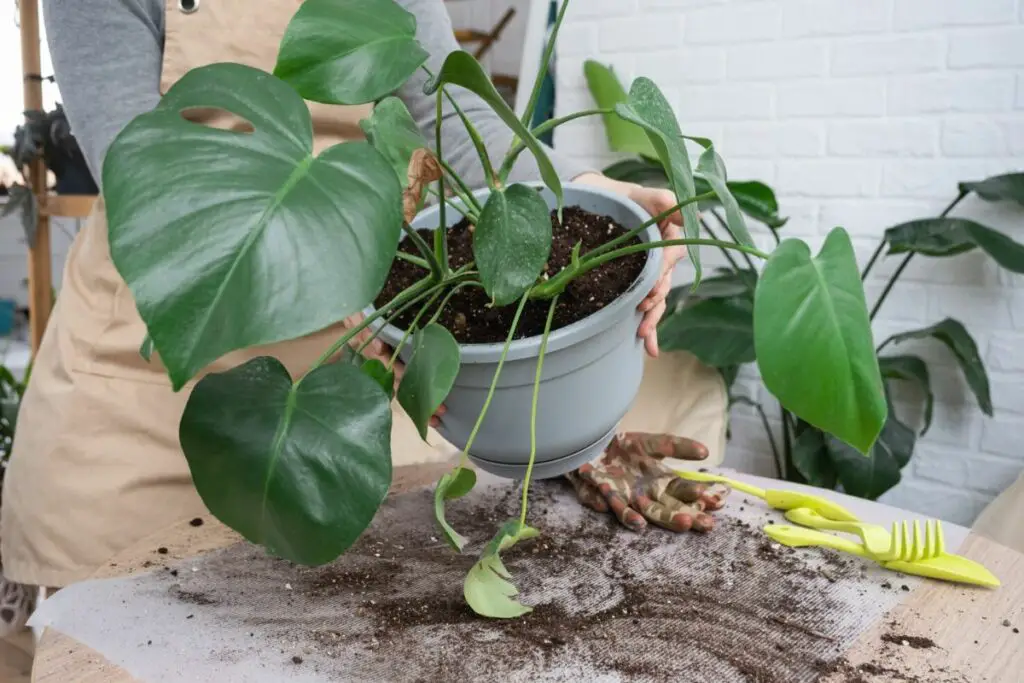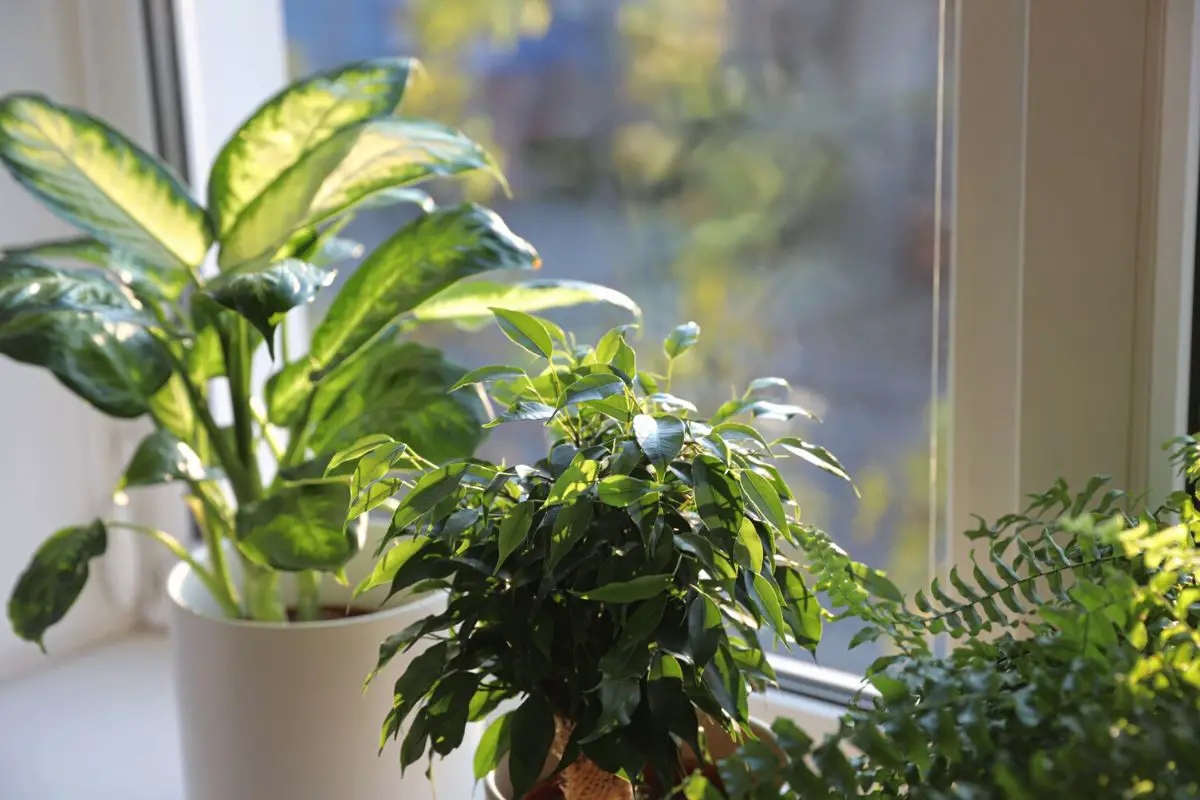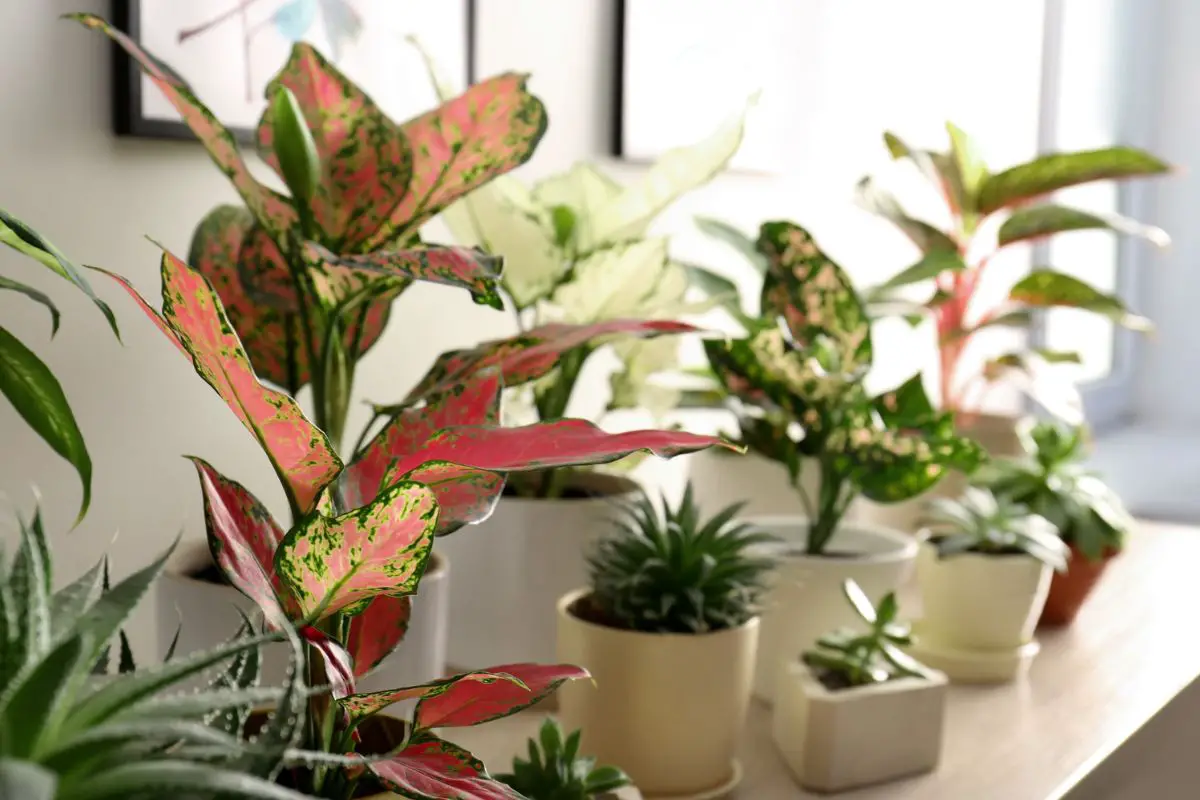Growing a healthy, resilient plant is every home gardener’s dream. However, there comes a time in a plant’s growth cycle when it becomes a tad too tall for comfort. Luckily, there’s no shortage of safe, straightforward approaches to deal with an overgrown plant without risking its health or longevity.
When houseplants are getting too tall, you can either prune them, provide structural support or repot them. If you’re looking to downsize your plant, you’ll want to prune its stems, branches, or roots. If the size isn’t an issue, you can opt for one (or both) of the other two strategies.
In the following sections, I’ll expand on the best ways to deal with an overgrown plant while still promoting its health and resilience. I’ll also go over some of the best strategies to prevent your houseplant from becoming too tall in the first place.

Strategies for Managing Overgrown Plants
Dealing with an overgrown plant is easier than you’d think, so never skimp on your regular watering and fertilizing routines in fear of your greenery becoming too tall.
While there are many ways to scale down your plants, raising one that simply refuses to grow isn’t nearly as easy.
Before diving into some tips and techniques on how to deal with overgrown greenery, I want to note that a plant doesn’t need to reach a specific size for it to warrant a downscale.
As soon as it starts invading your personal space or clashing with the rest of the decor, you can begin implementing the following tips.
Pruning
Pruning is the simplest way to reduce the size of an overgrown plant. The practice consists of cutting away overgrown (or dead) stems and branches until your greenery reaches the desired size.
Pruning kills two birds with one stone: it downsizes your plant safely and conveniently while increasing its fruitfulness and longevity. It’s a win-win!
However, keep in mind that the practice is also known to enhance growth rate. As a result, you’ll likely have to keep at it on a regular basis. As soon as you choose pruning as your strategy of choice, beware that you’re making a long-term commitment.
Be aware that cutting the top of tall woody houseplants, like the fiddle leaf fig and rubber tree, will result in lateral growth, giving your plant a more bushy appearance. This is usually what indoor gardeners aim for.
Just ensure to thin the lateral shoots regularly, especially during the growing season, when they get too bushy to promote air circulation and prevent moisture-related problems like pests and microbial infections.
Root Pruning
When your plant reaches your preferred size, root pruning becomes a necessity. Some species grow so fast that the only way to restrict their pace is to deal with the source itself.
Don’t worry, though. The practice is as easy and safe as it can be (not to mention highly beneficial).
Root pruning slows stem growth while creating space in the soil for new roots to emerge. This also means that you won’t have to move your plant to a bigger container as it grows, which could subject it to transplant shock and a plethora of other issues.
The frequency of the practice usually depends on your personal preferences and comfort level. However, when a plant grows more than three times taller than its container, this might be a sign to whip out your secateurs.
How to Prune Overgrown Roots
Here’s a quick 4-step guide on how to prune overgrown roots:
1. Expose the Root Ball
Water the plant at least two days before the pruning session. For this step to go as smoothly as possible, you’ll want the soil to be moist but not soaking wet. Start removing the soil all around the root ball until the structure is fully visible.
2. Loosen the Roots
When a plant gets overgrown enough, its roots start becoming too entangled for you to accurately inspect and prune them. Therefore, you’ll want to (gently) start loosening the roots using your hands until each one of them is distinguishable.
3. Cut Any Damaged, Lanky, or Overgrown Roots
After inspecting each root individually, you’ll be able to find the ones that are damaged, lanky, or otherwise overgrown. Start cutting these roots (or their damaged segments) by using any cutting tool of your choice (secateurs, pruning saw, shears, knife, etc.).
Here are some essential tips to go by every time you prune your plant:
- Always use clean or sterile shears. Wipe the blades with a cloth soaked in rubbing alcohol or spray the blade surface with alcohol before moving on to the next plant part.
- Don’t cut more than 30% of the root mass. Otherwise, the plant will have a hard time recovering.
- Prune the same volume of roots and shoots. The aboveground parts grow in proportion to how much the roots can support. Cutting the roots requires thinning the shoots equally for better chances of recovery.
Moreover, if you haven’t pruned your plant’s stems and branches in a while, now might be a good time to do so. You can use this opportunity to shorten a houseplant that has grown too tall.
The freshly cut roots might not be able to sustain the same weight and height that they used to. Therefore, if your plant is especially sizey, you might want to give its exterior a cut as well.
4. Put the Plant Back Into Its Pot
Now that the roots are efficiently pruned, the plant is ready to go back to its original pot, which can now accommodate it perfectly. Again you’ll want the soil to be a bit moist to sift right between the roots. Afterward, you can continue to follow your regular maintenance schedule to ensure the roots receive the right amount of nutrients and hydration.
Other Things to Keep In Mind
Observing a good watering routine is especially important after a root pruning session. Therefore, you’ll want to be extra cautious as your plant settles in.
Be patient and make sure to water your plant depending on its moisture requirement. Always make sure the soil is adequately dry between sessions to prevent root rot.
Providing Structural Support
If space isn’t an issue, you might (rightfully) feel apprehensive about pruning your greenery. However, as a plant becomes too tall, its structural integrity will suffer as well.
Therefore, you’ll want to make sure that you at least provide some support for it to continue growing without risking getting deformed, or worse, leaning/falling over.
Before diving into some of the best ways to provide structural support for your plants, it’s crucial to note that not all of them require it. For example, cascading plants like creeping thyme won’t benefit from vertical or horizontal support.
However, considering that most houseplants grow either vertically or horizontally, it’s safe to assume that yours could benefit from this practice. If your greenery is drooping down or growing outward, it might be time to think of a way to provide it with some external support.
Some of the best ways to provide structural support to your plant include:
- Stakes
- Cages
- Wire shapes
- Moss poles
Repotting
Repotting is another excellent way to deal with an overgrown plant without reducing its size.
When your greenery grows big enough, its roots will start overcrowding the container, leading to an insufficient supply of nutrients and hydration. Moreover, a smaller pot simply isn’t able to support the height and weight of a plant several times its size.

Preventive Measures for Excessive Growth
The saying “prevention is better than cure” rings true even when it comes to caring for your overgrown plants. The easiest, most convenient way to combat this issue is to prevent it from occurring in the first place.
Here are some tips to help you prevent a houseplant from getting too tall:
Maintain a Regular Pruning Schedule
Don’t wait until your plant has grown out of control to bring out the secateurs. By keeping up with your pruning schedule, you’ll keep your greenery’s size in check while ensuring healthy growth and longevity.
Divide or Propagate Your Plant
As you notice your plant getting a bit too tall for comfort, you can divide or propagate it into two separate pots to keep its growth under control.
You can remove healthy stem cuttings about 2-6 inches (5-15 cm) long from the top of the overgrown plant and root them in the soil or water. This will leave you with a more compact mother plant and a few young plants you can gift your family and friends.
Adjust the Light Exposure
Cutting back your plant’s light exposure is one of the safest ways to keep it from growing out of control. However, be careful not to make too drastic of a change, as doing so could cause irreparable damage to your plant.
If you’ve been growing your houseplant directly under grow lights rich in red light, it’s natural for the plant to grow taller and reach for the light source. Give your plant access to natural light when possible, and rotate the pot by 90° every time you water it. This will promote even and bushy growth.
Final Thoughts
When a houseplant gets too tall, it can not only clash with your interior design but also invade your personal space. Luckily, there’s no shortage of easy, convenient approaches to deal with an overgrown plant.
When a houseplant gets too big, you can either prune it, provide some structural support, or repot it.







